The ultimate guide to community analytics and operations
Learn all about community analytics and the community operations managers who wield them: what metrics to track and how to select goals that set you, the community, and your organization up for success.
- Overview
- What are community analytics?
- Metrics to use for community analytics
- Metrics to match your growth phase
- Set goals using community analytics
- What is community operations?
- Achieve your goals through community ops
- Building a community ops team
- Do more with Common Room
Turn buyer intelligence into pipeline with AI.
Book a demoOverview
Community teams that achieve the best results all have one thing in common: They use data to identify opportunities to accelerate growth, increase efficiency, and tie their work to key business outcomes. These teams also recognize that using data to drive action and continuous improvement requires unique skills. That’s why community operations managers often serve as data-driven co-captains alongside community leaders to help steer the ship based on insights from analytics.
To help you better understand the nuances of community analytics and community operations, we’ve put together this guide to answer questions such as:
- What are community analytics, and why are they important?
- What metrics should I use for my community analytics?
- How do I use community metrics and analytics to set goals?
- What is community operations, and why is it important for measuring success?
- How does a community operations manager help the community and company achieve key goals?
- How do I build a community operations team?
- How can the right tools accelerate the work of a community ops manager responsible for community analytics?
To chat analytics with community operations leaders and other pros, join us in the Uncommon Community Slack where 1,500+ community and DevRel professionals exchange learnings and best practices.
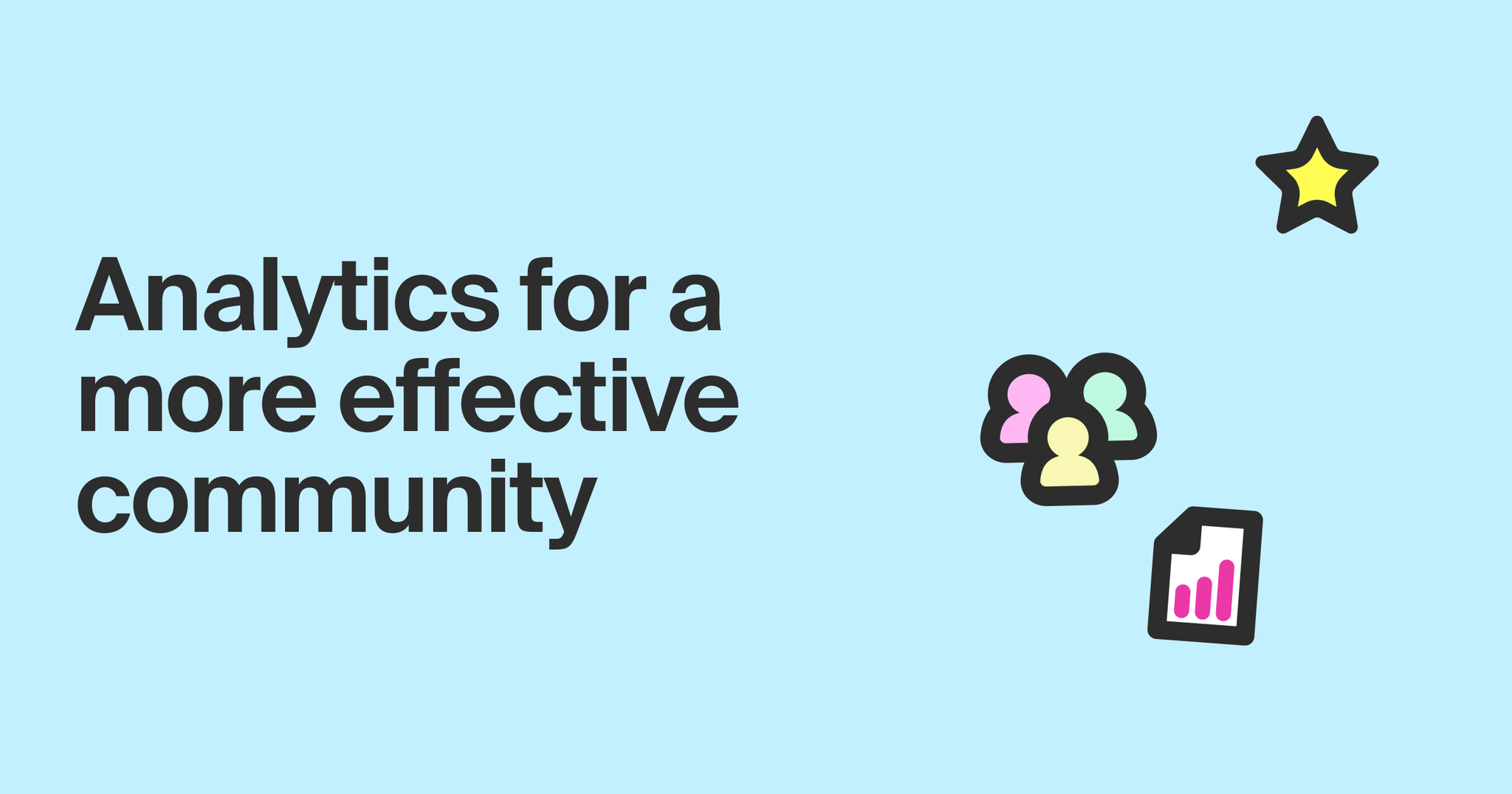
What are community analytics, and why are they important?
Community analytics are the insights you unlock by using data to measure the success of your community growth strategy. The term community analytics may also refer to the process of extracting these insights—the analysis itself—which can either be performed manually by a human or automatically with the help of a tool.
Metrics, on the other hand, are the data points you continuously collect for analysis. In the section below, we will take a closer look at the primary categories of community metrics and what they measure.
Example: Let’s say your team measures the number of messages sent in Slack and then uses a tool (like Common Room) to surface trending topics and member sentiment related to those messages. In this case, the total volume of Slack messages would be the metric, while the insight into trending topics and sentiment would be the analytics derived from that data.
Community analytics are important because they help community leaders understand who their members are and what types of community-building activities are most effective in delivering value and driving growth. In other words, they give you the actionable information that is required to best serve and build your community.
When the question, “What is the bottom line impact of our community?” inevitably arises, community analytics hold the key to providing a tangible answer that will satisfy stakeholders. Community analytics are vital to measuring and informing community-led growth, which is the process of leveraging community to drive business outcomes (e.g., increasing customer acquisition, boosting engagement, and improving retention).
Check out our guide to community analytics for more information about the what, why, and how of community analytics and how they can help you understand the health and efficacy of your community.
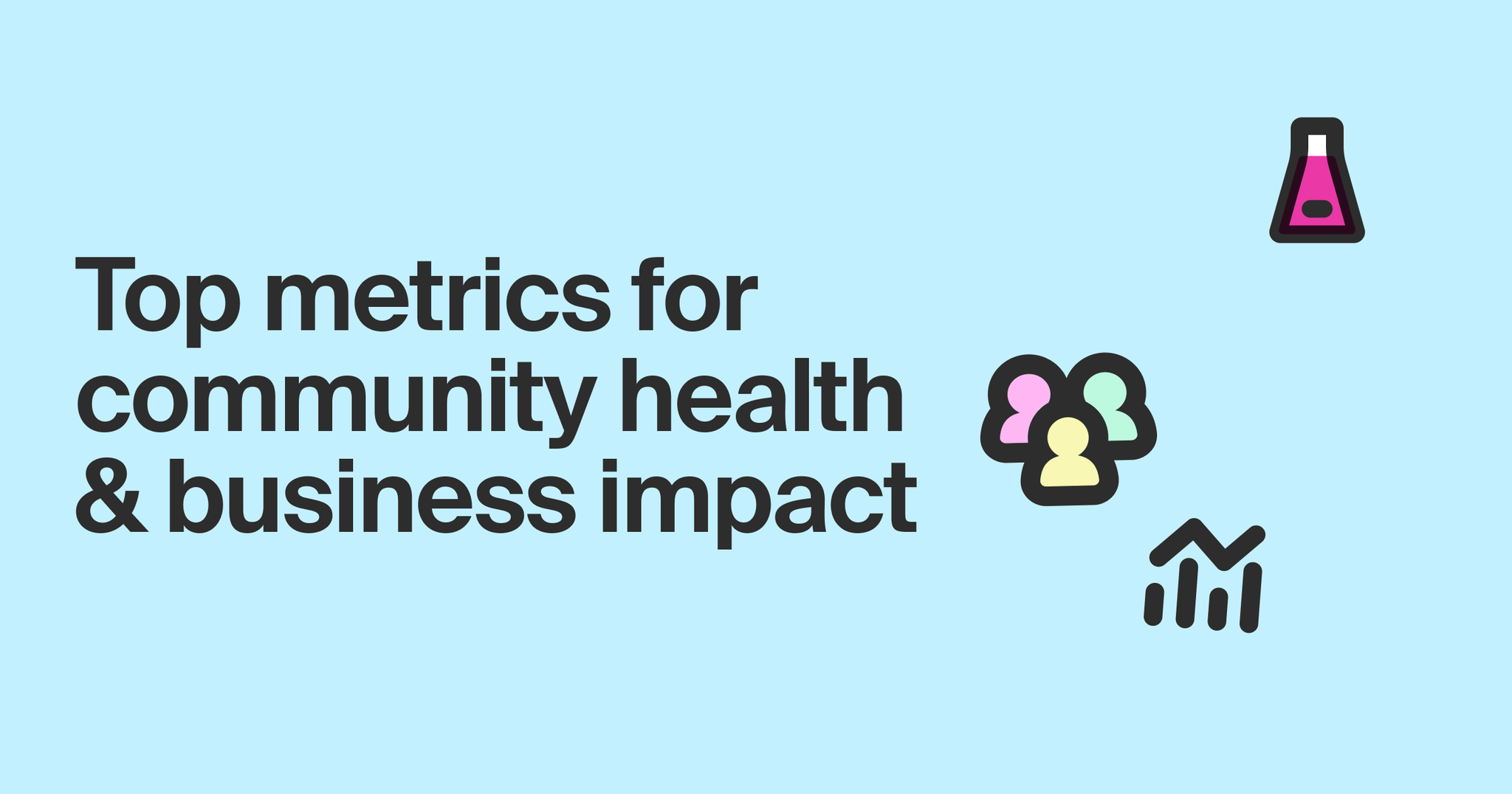
What metrics should I use for my community analytics?
Metrics and analytics are critical to understanding the success of your community, including if members are receiving value, whether your community is engaged and growing, and what outcomes it’s driving for the organization.
In general, community metrics fall under two overarching categories: community health and business impact. Each tells you different things and can be further broken down into subcategories based on what they are measuring.
Community health metrics measure the effectiveness of your activities and programming to help you understand if they’re delivering value that drives engagement and growth. They include:
- The rate at which your community is growing via membership metrics such as member headcount, member type, and membership growth rate.
- The degree to which it is keeping members involved via engagement metrics such as total volume of activity, ratio of observers to active participants, and percentage of members who qualify as champions.
- How much support members receive via responsiveness metrics such as response rate, median response time, and ratio of community responses to team member responses.
Business impact metrics connect community-building efforts to company outcomes to prove the ROI of community. These measures include:
- The degree to which your community is helping drive or influence revenue via attribution metrics such as community impact on deal time to close, percentage of revenue from community-engaged organizations, and customer retention of community engaged-organizations.
- The effect community engagement has on desired marketing and sales outcomes via marketing- and sales-related metrics such as number of new organizations, fastest-growing organizations within the community and activity related to key accounts.
- The impact community engagement has on product usage via product-related metrics such as reach of product education, community-driven product adoption, and customer support case deflection.
For additional details, read our blog on Metrics to use for community analytics.
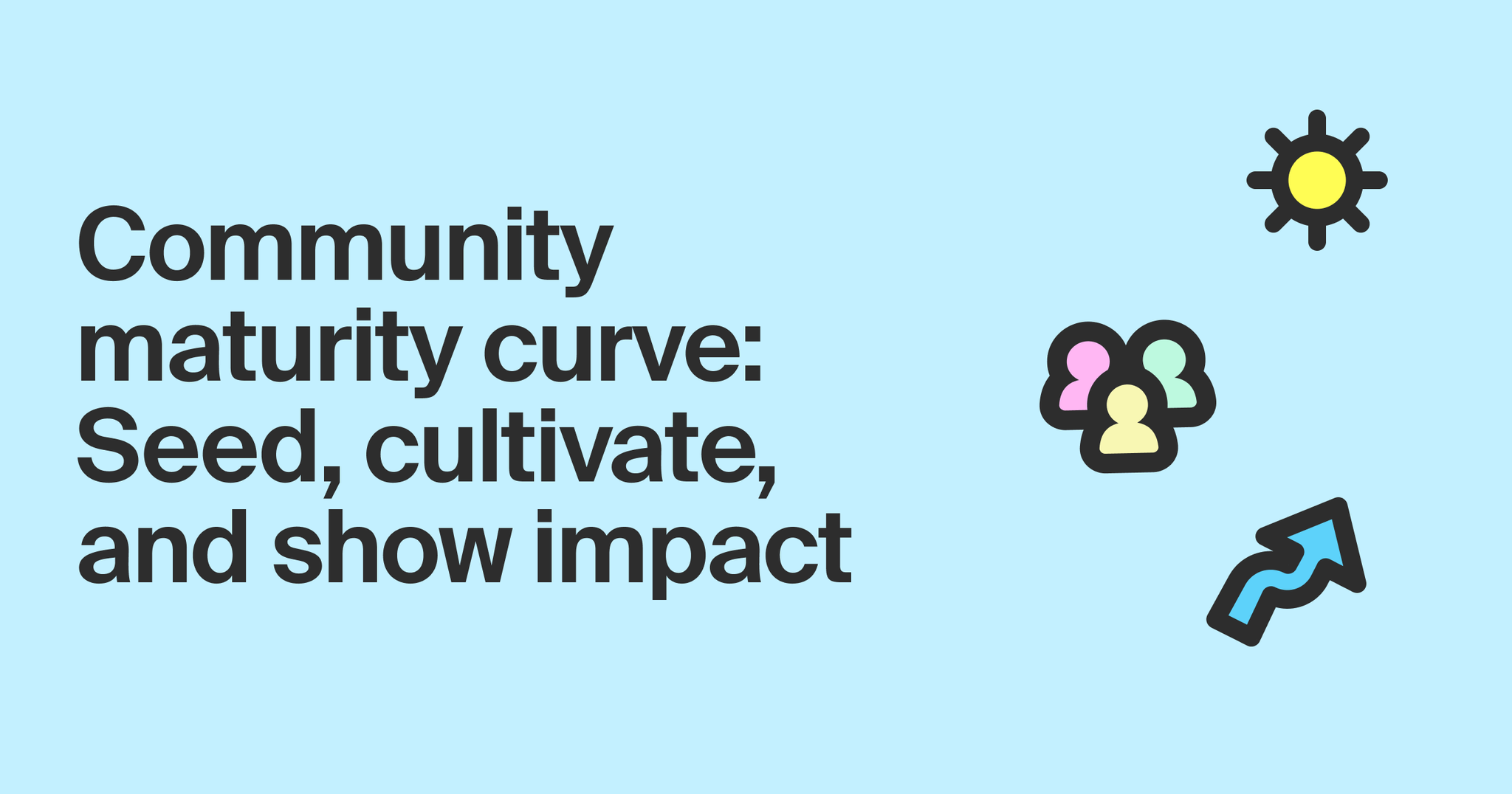
Choosing the right metrics for your growth phase
Honing in on the right metrics for your community based on its maturity is critical for both setting you up for success in your current phase as well as your ability to grow into the next phase.
Therefore, consider your current spot on the community maturity curve when selecting the metrics that will flow into your community analytics. Here are a few examples of what that could look like:
- A company in the seed phase wants to increase community headcount while providing a high-quality experience to keep retention as high as possible. They might choose to collect membership metrics such as month-over-month membership growth and responsiveness metrics such as median response time.
- A company in the growth phase wants to continue expanding their total reach while building strong relationships and amplifying their most active members. They might start paying attention to membership metrics such as member type (to identify advocates, champions, and influencers), as well as engagement metrics such as activity by source (to determine channels where they should double down vs. pull back resources).
- A company in the business impact phase wants to build upon the strong foundation they have laid in their first two phases and achieve end-to-end community attribution. To prove the ROI of community, they might choose to adopt marketing- and sales-related metrics such as number of new organizations seen in the community and attribution metrics such as percentage of revenue from community-engaged organizations.
Note that while these metrics by phase will help guide which primary goals you select for your program, you’ll likely want to monitor metrics across phases. For example, you and your program will always be well-served by being able to tie your community initiatives to business outcomes. If you can do it earlier, don't wait for the third phase!
For a deeper dive into the community maturity curve and top metrics to track in each phase, check out the blog Phases of community growth.
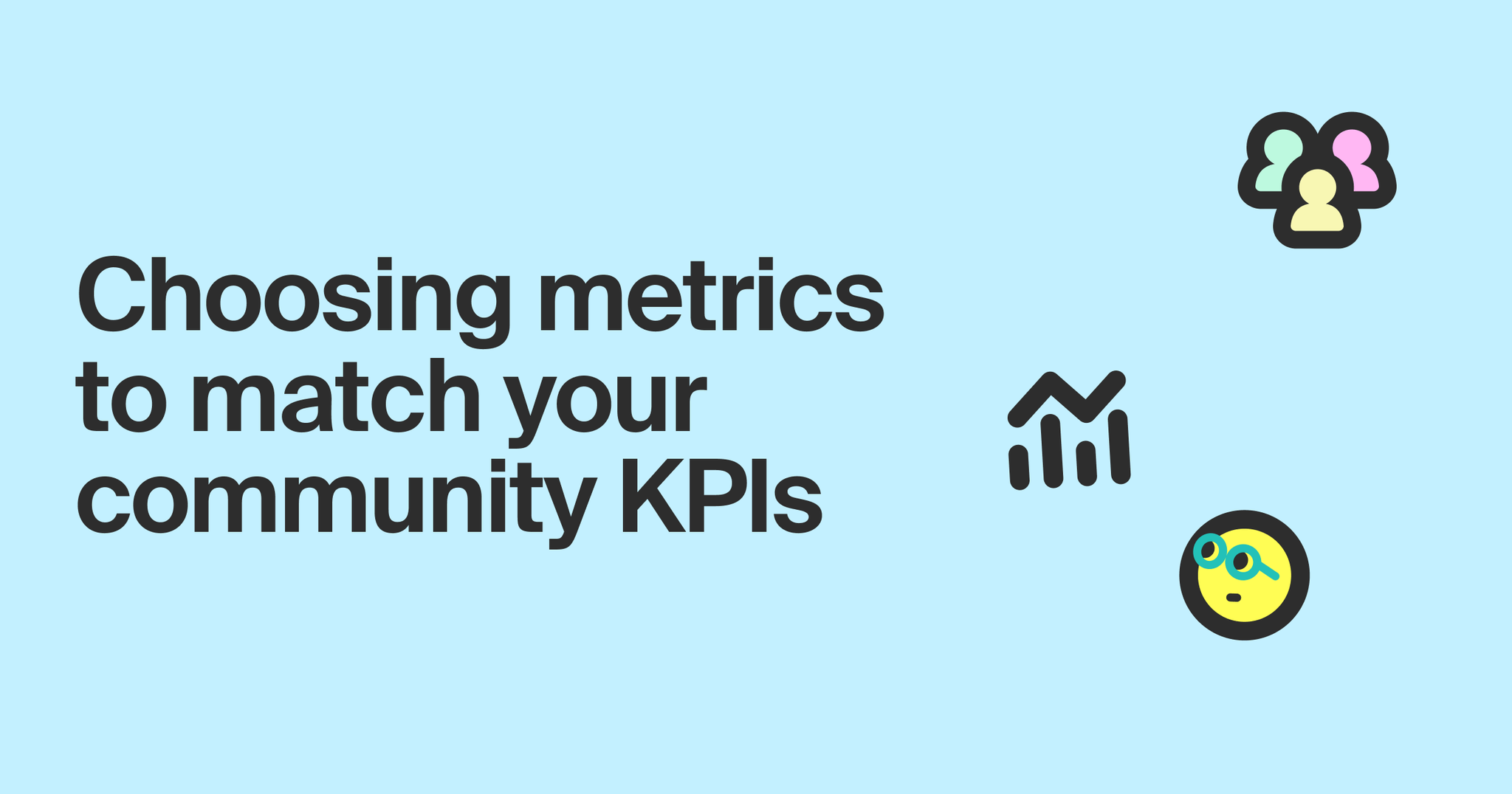
How do I use community metrics and analytics to set goals?
No matter where you are on the community maturity curve, your criteria for evaluating success should ladder up to the overall goals of the organization. Think about your desired outcomes and how analytics and reporting can help you determine next steps while measuring progress toward the results you wish to see.
With that in mind, every community program needs to choose specific key performance indicators (KPIs) that will be used to gauge success. KPIs help to answer the question, “Are we moving closer to achieving the most important objectives of our team and the business as a whole?”
For instance, if a team wanted to improve outcomes for their ABM initiatives they might set a goal such as, “increase community members from target organizations by 5% this quarter.” It’s true measuring that specific of a KPI would be a significant manual lift—however, there are tools to automate analytics and surface intelligent insights would make it much easier to track and prove that community is an effective go-to-market growth strategy.
Here are a few real-world examples of how leading organizations have set community goals and KPIs based on their desired outcomes:
- Moov wanted to scale its open source community while retaining members but needed a way to quantify growth and engagement. To solve this challenge, the team first set priority metrics like total number of members and level of activity within the community. Their team then used Common Room to better understand the channels driving the desired growth and make adjustments accordingly. This approach resulted in a 190% increase in YoY community growth and a 350% uplift in YoY community activity.
- Harness needed a way to prove that its community team’s work benefited members and made them feel supported. To achieve this, the team decided to measure vital health metrics such as membership growth and community responsiveness, as well as business impact metrics such as organizations and key personas joining the community. Using Common Room, the Harness team was able to design a strategy to achieve a 25% improvement in response rate across 10,000 organizations.
- Asana wanted a way to demonstrate that its community positively influenced product adoption and company growth. By aligning expectations across stakeholders, the team identified the right KPIs, including health metrics such as growth rate for their ambassador program and business impact metrics such as product usage driven by the community. Since embracing intelligent community growth, Asana has been able to “take action in a very direct way that clearly ladders up to the success of the business.”
Still not quite sure what your community analytics are telling you? Head over here for more details on how to analyze the relationship between metrics, analytics, and company goals.

What is community operations, and why is it important for community success?
Community operations is an essential function of modern community teams that typically encompasses the analytics and other data-driven activities discussed above. Whether a company has a dedicated community operations manager or community ops falls under the purview of a community manager, the high-level responsibilities of the role typically include:
- Setting realistic goals and KPIs based on desired community and company outcomes
- Creating a plan to measure progress, iterate tactics, and achieve results
- Showcasing the business value of community to key stakeholders
- Facilitating accessible, high-quality community member experiences
- Managing tooling and alignment across the community tech stack in service of the above goals
Community operations is a primarily “back of house” discipline that focuses on setting the community team up for success. At the same time, community operations is closely related to community management, which means it includes “front of house” responsibilities that are more directly related to team-to-member and member-to-member interactions.
Let’s take a look at the front-of-house vs. back-of-house responsibilities of community operations:
- Front of house
- Member advocacy: Keeping documentation, FAQs, and other key resources up to date and ensuring members receive helpful, timely responses.
- Member empowerment: Building and maintaining vehicles for advocacy, such as nurture programs and champion programs.
- Back of house
- Project management: Managing program timelines, aligning community outcomes with stakeholder expectations, and ensuring members know how to receive value from the community.
- Data processes: Overseeing the analytics to uncover actionable insights, running surveys to identify opportunities for operational improvement, and owning the reporting process against set goals and KPIs.
- Technical stack: Ensuring that community tools are working properly while evaluating and implementing new technologies to meet needs as the community grows.
As you can see, community operations is vital to running the community efficiently, keeping the team in sync with other departments, and proving the value of community across the entire business.
Dive into our Guide to community operations for more information on this emerging discipline and how it slots into an overarching community program.
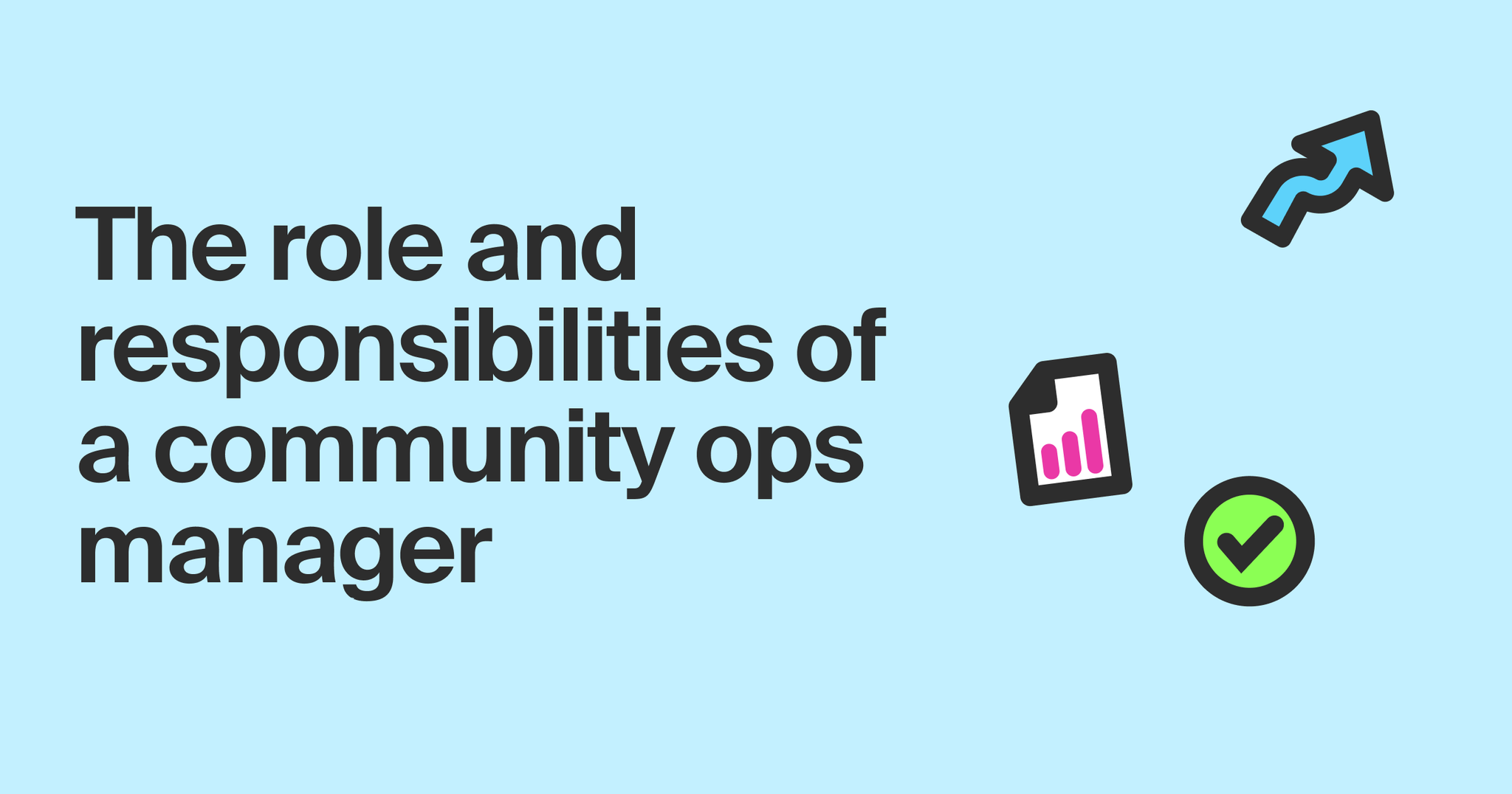
How does a community operations manager help the community and company achieve key goals and objectives?
A community operations manager makes sure that the community team is investing its time and resources in the right places in order to achieve goals. These might be internal goals, such as reducing the amount of time spent on member onboarding, or external goals, such as identifying opportunities for content and event collaboration with other organizations.
When a community operations manager (or community manager wearing their community operations hat) is thinking about the “how” of achieving program goals, they will need to assemble a community roadmap including:
- The tasks needed to achieve the goal
- A list of stakeholders and their responsibilities
- Scheduled checkpoints along the way
- Metrics that will be used to monitor progress
It’s helpful to present this information in a visual, easy-to-understand way to ensure the community roadmap can be quickly digested by stakeholders across departments (e.g., a Gantt chart). Here is an example of a comprehensible roadmap put together by our friends and community leaders Erica Kuhl and Brian Oblinger.
Once implementation of a community roadmap is underway, the community operations manager will begin to measure progress, use analytics to surface insights, and recommend course-correcting actions. This involves data from a wide variety of sources, including communication apps, social media, email campaigns, input from other teams (like sales, marketing, customer success), and more.
The role of the community operations manager is also pivotal in tracking community impact on top-line business goals. These involve pure business impact metrics, as mentioned above, but can also entail supporting health metrics that business results are predicated on. Some of the business goals that community operations managers help track against include:
- Building brand awareness by sharing relevant resources and measuring content reach.
- Cultivating brand champions by recognizing and rewarding highly engaged members and using impact points to quantify their influence.
- Shortening the sales cycle by strategically engaging with key accounts and tracking average time to close for these organizations.
- Boosting retention by reaching out to customers who have had a sentiment shift or drop off community activity.
- Tracking community involvement in creating upsell and cross-sell opportunities through community-attributed revenue.
Read this article on community manager responsibilities to learn more about what these folks do and how they interface with the community and broader team.
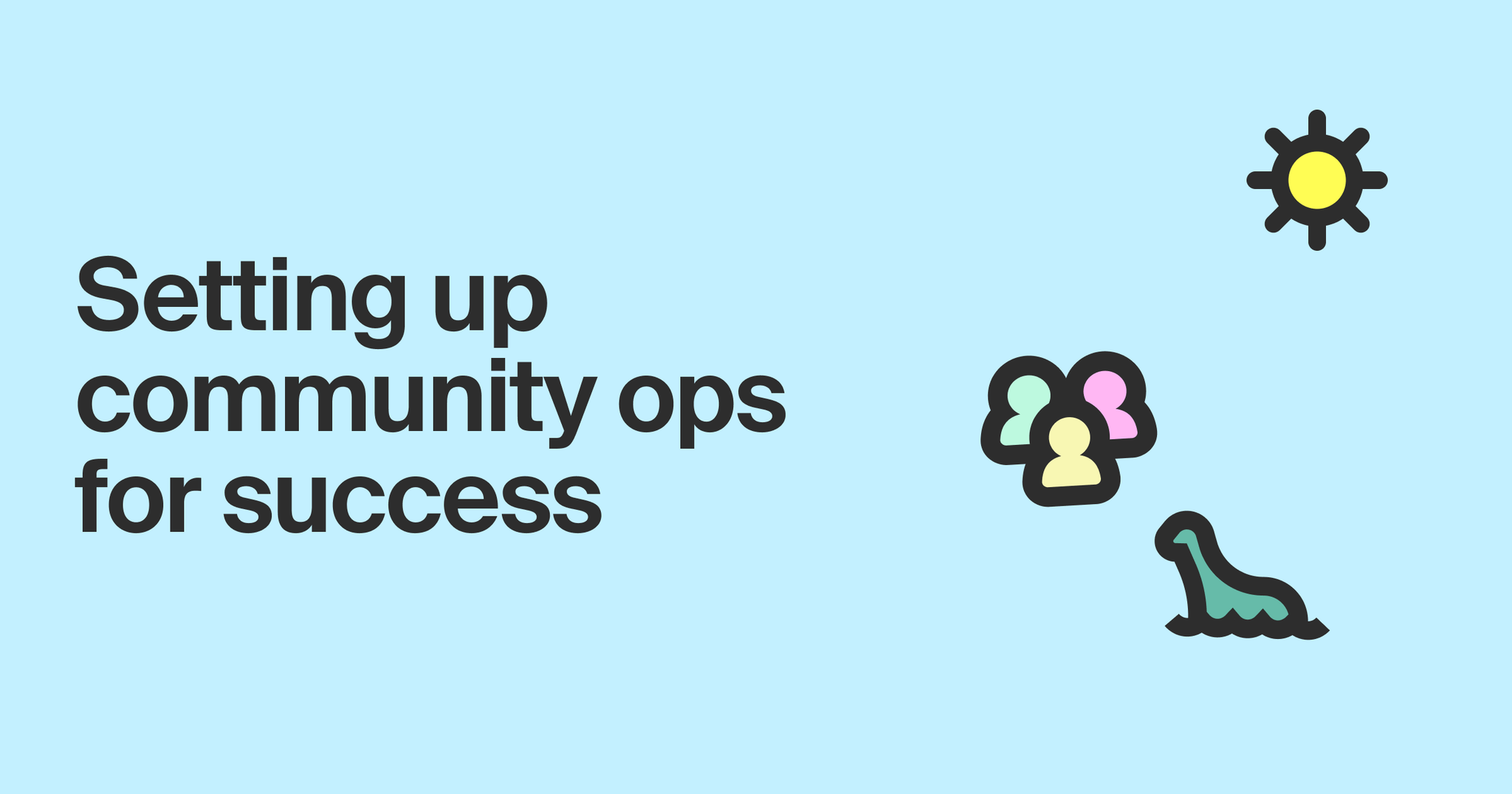
How do I build a community operations team?
If you are considering hiving a dedicated community operations manager (or team!), there are a few things you should bear in mind regarding skills to look for and how you conduct the hiring process.
When evaluating candidates for your community operations, consider both hard skills and soft skills. Looks for:
- Project management experience that indicates they are capable of juggling multiple projects while achieving results.
- Communication skills that allow them to share important information and ideas in a clear and succinct manner.
- Community management experience to understand the needs of the community and their community manager counterparts.
- Data analysis and reporting skills that make the connection between measuring performance and recommending actions and next steps to reach desired goals.
- Detailed knowledge of community channels and tooling such as forums, communication apps, social media platforms, and analytics tools.
- Problem-solving skills which come in play when resolving technical issues in the teams’ tech stack or even helping community managers with conflict resolution.
Once you’ve documented the skill requirements for your community operations team, it’s time to consider how you will go about the hiring process. While the exact details will be up to you, we have found the following three-pronged approach to work well when hiring for community operations:
- Step #1: A take-home exercise related to the position where candidates have time and space to study the material and deliver a response they feel confident about.
- Step #2: A cross-functional panel presentation in which the community operations candidate demonstrates their ability to interface with different stakeholders across departments.
- Step #3: A values interview that entails the candidate responding to direct questions related to your company values.
For more actionable tips you can use to hire for these roles, read How to build a community operations team.
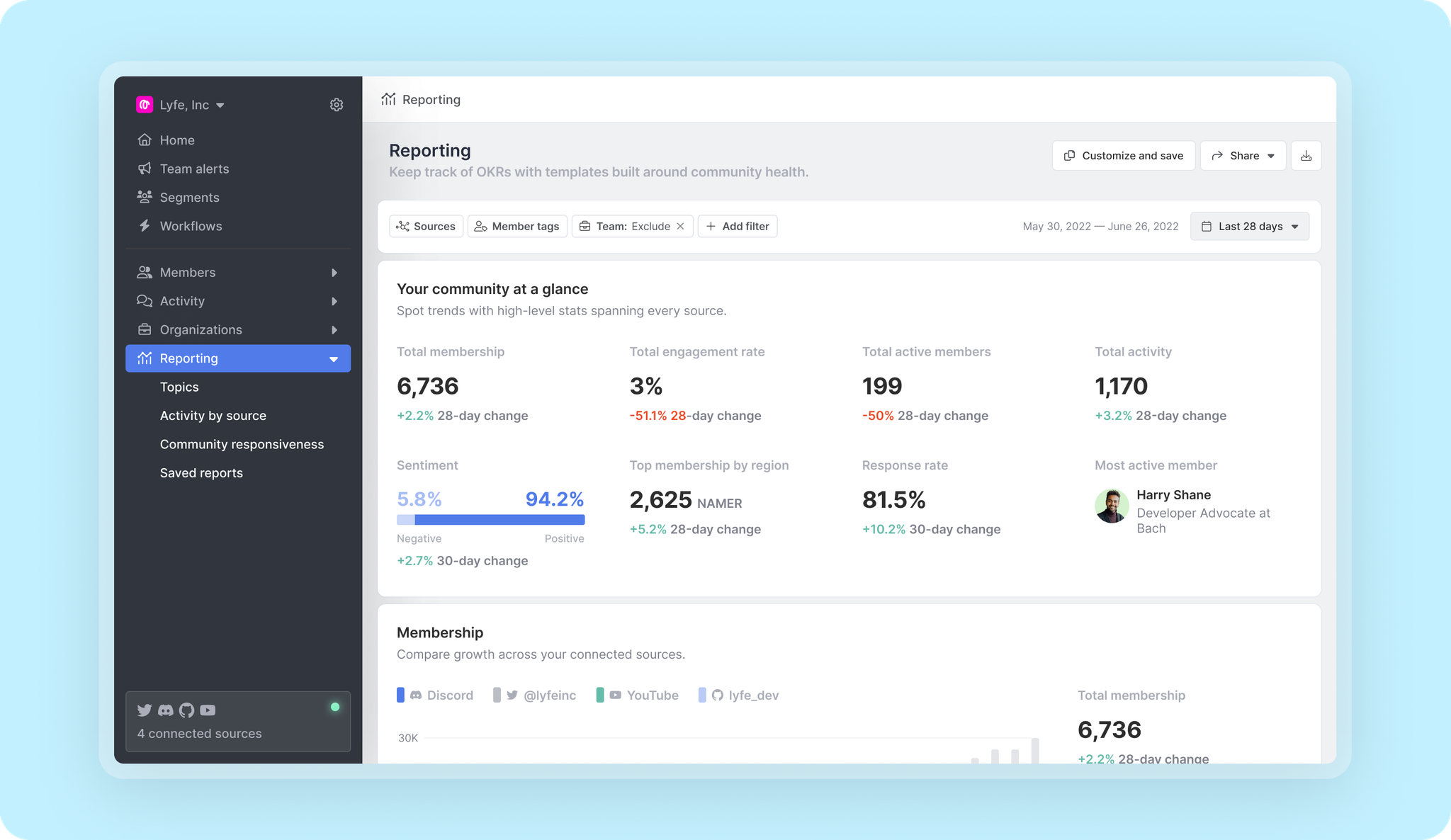
How does a community ops manager do more with the right tools?
Community teams and operations managers often acknowledge that analytics help them make more informed and strategic decisions—but, at the same time, they struggle with the fact that collecting, tracking, and analyzing community metrics manually or with a fragmented toolset can be a Herculean task.
That’s why many community-led organizations at varying levels of community maturity have adopted Common Room to accelerate their growth journey. Our AI- and ML-powered platform enables multidimensional data analysis and comprehensive reporting that surfaces key insights across community engagement, customer, and product data.
Complete with automation capabilities that handle the more time-consuming aspect of community management, Common Room has everything you need to drive success across the entire customer journey for increased engagement, greater product adoption, and stronger revenue results.
These features include:
- A unified view of each member, across every channel: Common Room brings together information from community sources to create a 360 degree view of each member and their activity.
- Intelligence to surface insights and trends: The platform offers a way to understand essential community health indicators—what people are saying, their sentiment, and how they're engaging.
- Recommended actions to engage your community: Common Room enables taking action, like automating a welcome message or an alert to any negative sentiment for a new product in the market.
- Reporting to demonstrate the impact of community: The platform provides visibility into community growth and the impact of CLG on the business.
Ready to intelligently engage and grow your community? Try Common Room for free or request a demo.
We think you'd like these
Podcast
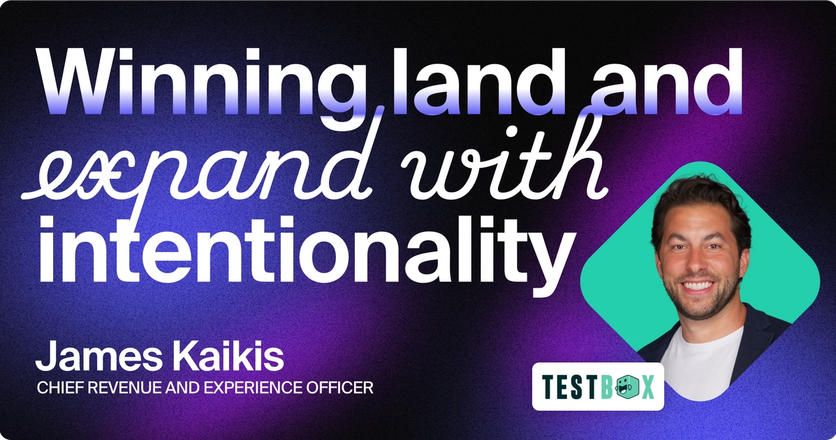 Mar 20th, 2025·5min readMaximize growth from your install base with James Kaikis, Chief Revenue and Experience Officer at TestBox.
Mar 20th, 2025·5min readMaximize growth from your install base with James Kaikis, Chief Revenue and Experience Officer at TestBox.Blog post
From insight to impact: Scale hyper-targeted personalization with Common Room's customer journey graph
Mar 18th, 2025·9min readSee how Common Room's customer journey graph helps you deliver hyper-targeted personalization at scale...Podcast
 Mar 6th, 2025·4min readFine-tune your tech stack with Mitch Osborne, Global Director of Business Systems & RevOps at G2.
Mar 6th, 2025·4min readFine-tune your tech stack with Mitch Osborne, Global Director of Business Systems & RevOps at G2.